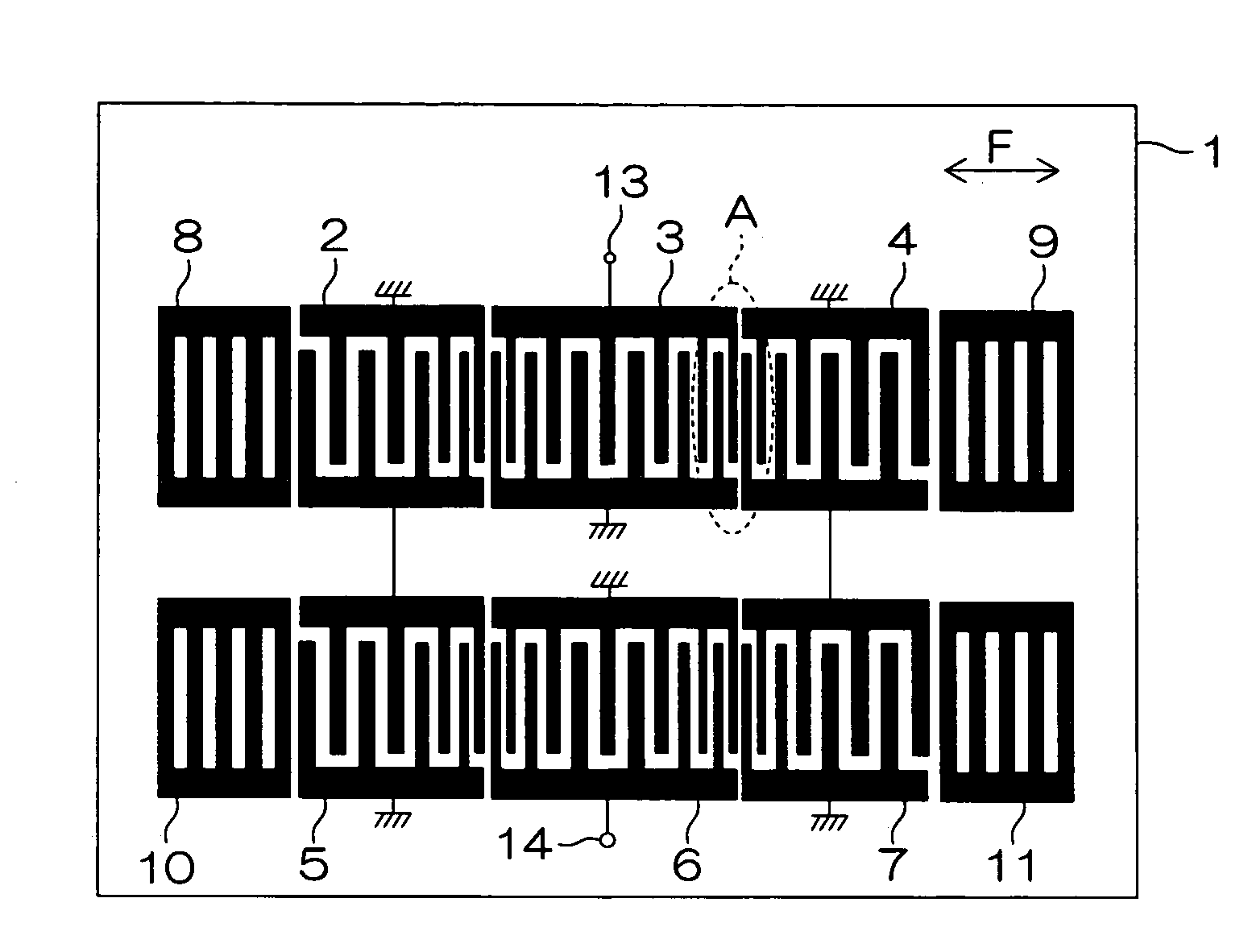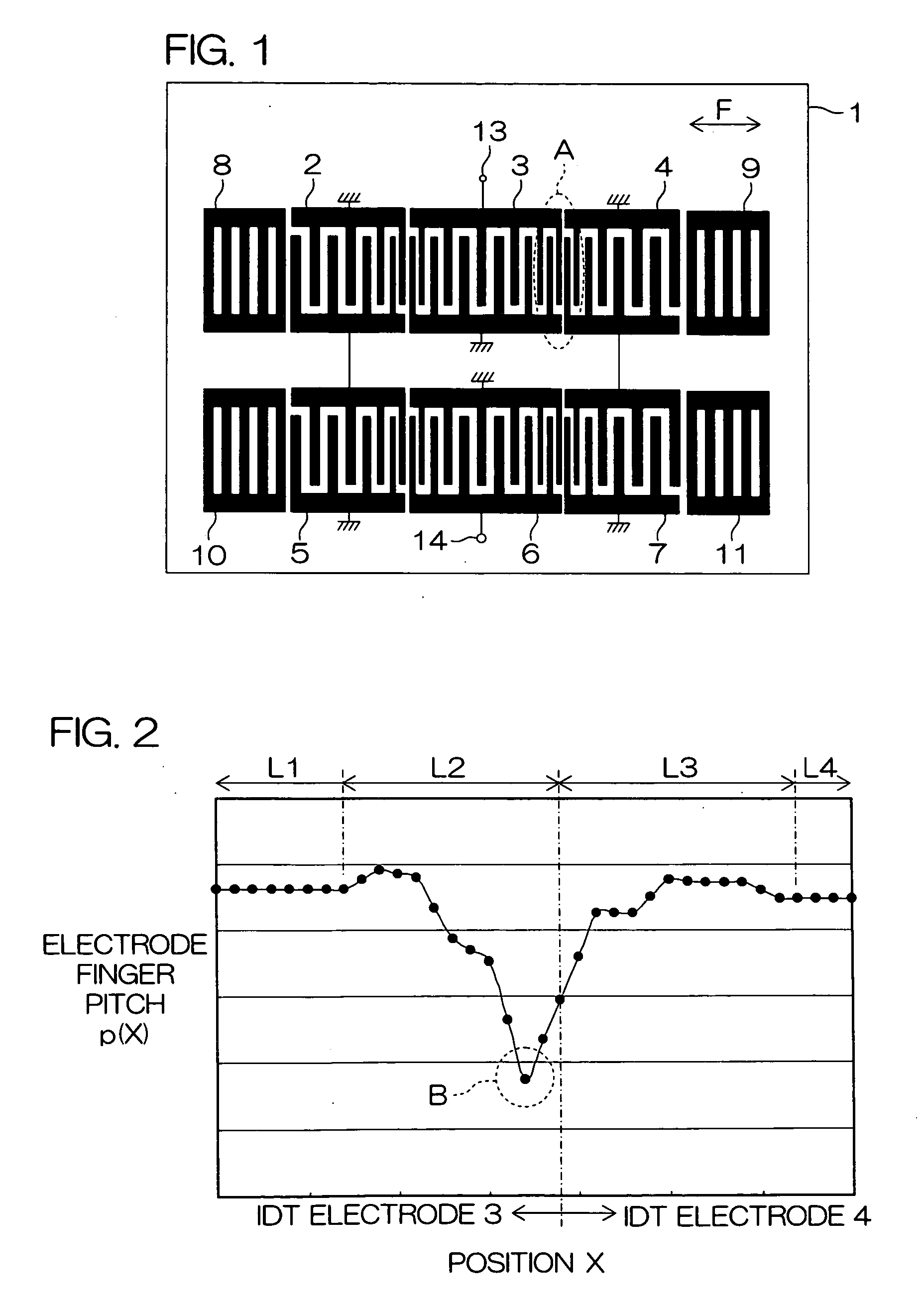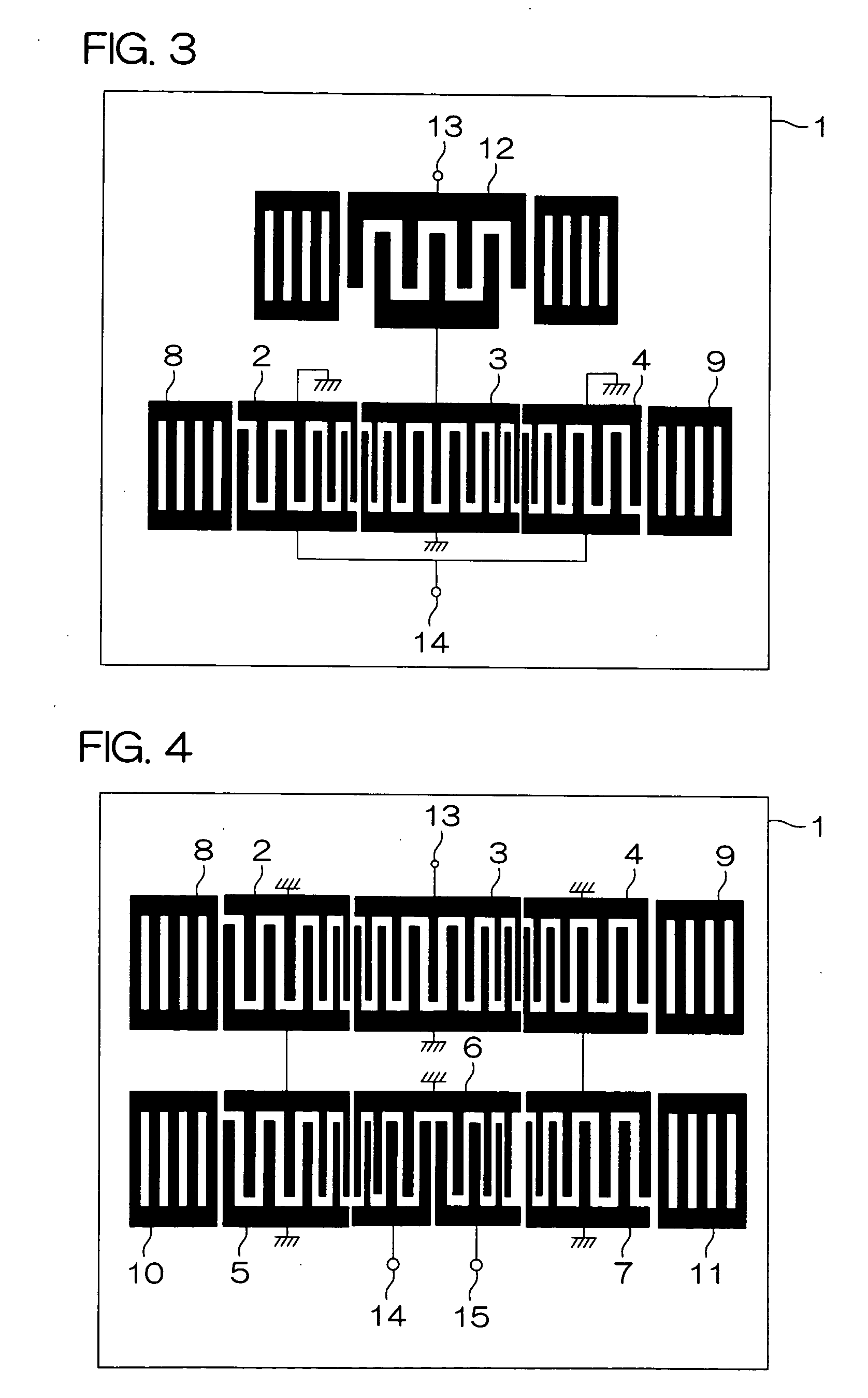Surface acoustic wave resonator, surface acoustic wave device, and communications equipment
a surface acoustic wave and resonator technology, applied in the direction of impedence networks, electrical apparatus, etc., can solve the problems of increasing the insertion loss of surface acoustic wave filters, unable to adjust the resonance mode generated in the pass band, and difficulty in sufficiently obtaining the antenna gain, etc., to achieve the effect of reducing the insertion loss, increasing the degree of design freedom of the pass band, and increasing the degree of out-of-band attenu
- Summary
- Abstract
- Description
- Claims
- Application Information
AI Technical Summary
Benefits of technology
Problems solved by technology
Method used
Image
Examples
example 1
[0108] An example in which the surface acoustic wave apparatus shown in FIG. 1 is specifically manufactured will be described.
[0109] In the surface acoustic wave apparatus, each of two adjacent IDT electrodes 3 and 4 comprises variable pitch sections L2 and L3, which are sections in close proximity to an end of the other IDT electrode, where the electrode finger pitch is variable and fixed pitch sections L1 and L4, which are the remaining sections, where the electrode finger pitch is fixed and is different from that in the variable pitch sections. The electrode finger pitch in the variable pitch sections L2 and L3 decreases toward the boundary between the variable pitch sections, and the minimum electrode finger pitch portion B is on one side spaced apart from the boundary.
[0110] A fine electrode pattern composed of an Al (99 mass %)—Cu (1 mass %) alloy was formed on a piezoelectric substrate 1 composed of a 38.7° Y-cut X-propagation LiTaO3 single crystal.
[0111] The electrode fin...
example 2
[0128] A surface acoustic wave apparatus similar to that in the example 1 was manufactured.
[0129] The example 2 differs from the example 1 in that in a surface acoustic wave resonator in the surface acoustic wave apparatus in the example 2, an electrode finger pitch in adjacent IDT electrodes 3 and 4 in the vicinity of the boundary between the IDT electrode 3 and 4 have a profile as shown in FIG. 5. That is, the minimal electrode finger pitch portion C in two variable pitch sections L2 and L3 as shown in FIG. 5 has three minimal positions.
[0130] The average electrode finger pitch in the variable pitch section L2 on the side of the IDT electrode 3 was 2.01 μm, and the electrode finger pitch in the fixed pitch section L1 was set to 2.12 μm.
[0131] The average electrode finger pitch in the variable pitch section L3 on the side of the IDT electrode 4 was 2.05 μm, and the electrode finger pitch in the fixed pitch section L4 was set to 2.10 μm.
[0132] The minimum portion B in the minima...
example 3
[0136] A surface acoustic wave apparatus similar to that in the example 1 was then manufactured.
[0137] The example 3 differs from the example 1 in that the electrode finger pitch in adjacent IDT electrodes 3 and 4 in the vicinity of the boundary between the IDT electrode 3 and 4 in a surface acoustic wave resonator has a profile as shown in FIG. 7.
[0138] That is, the surface acoustic wave resonator has a wide pitch region D in a variable pitch section L3 on the side of the IDT electrode 4. Further, the maximum electrode finger pitch portion B in the two variable pitch sections L2 and L3 is positioned offset by 4.05 μm toward the IDT electrode 3 on one side spaced apart from the boundary between the two adjacent IDT electrodes 3 and 4.
[0139] A graph of frequency characteristics in the vicinity of a pass band in the surface acoustic wave apparatus is shown in FIG. 11. FIG. 11 is a graph showing frequency dependency of an insertion loss representing filter transmission characteristi...
PUM
 Login to View More
Login to View More Abstract
Description
Claims
Application Information
 Login to View More
Login to View More - R&D
- Intellectual Property
- Life Sciences
- Materials
- Tech Scout
- Unparalleled Data Quality
- Higher Quality Content
- 60% Fewer Hallucinations
Browse by: Latest US Patents, China's latest patents, Technical Efficacy Thesaurus, Application Domain, Technology Topic, Popular Technical Reports.
© 2025 PatSnap. All rights reserved.Legal|Privacy policy|Modern Slavery Act Transparency Statement|Sitemap|About US| Contact US: help@patsnap.com



